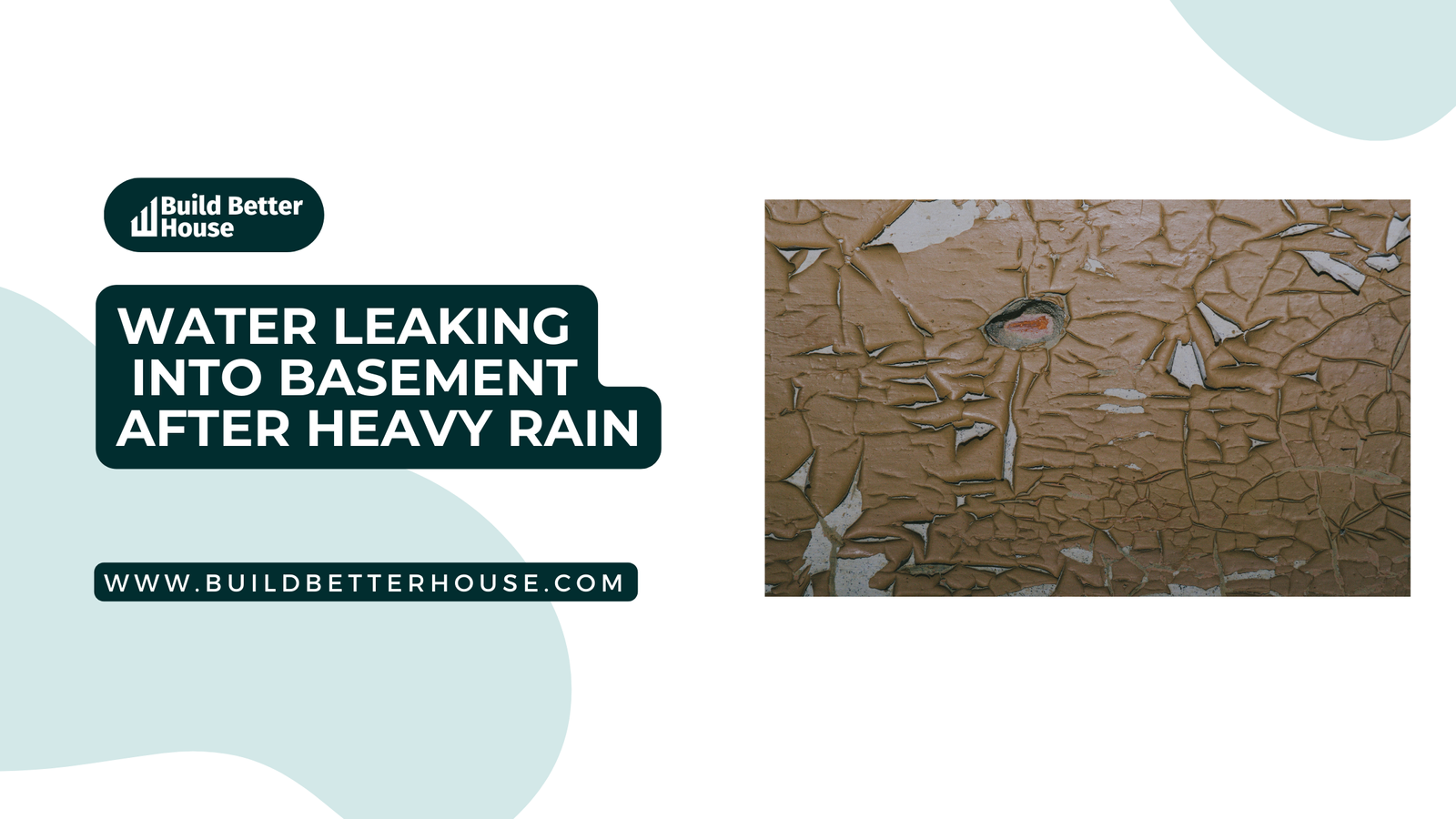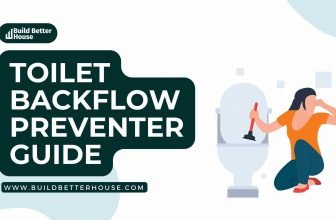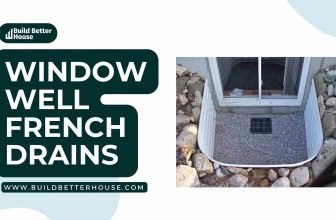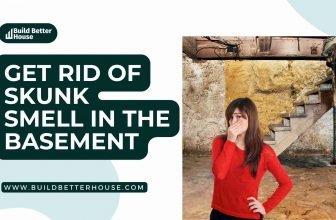Water Leaking into Basement After Heavy Rain: Effective Solutions

Water leaking into basements after heavy rain is a common issue faced by homeowners. This problem not only leads to damp, unpleasant living conditions, but it can also cause damage to your possessions and the overall structure of your home. To tackle this problem effectively, it’s essential to understand the most common causes of water leakage and what steps you can take to prevent it from happening.
There are several factors that contribute to water seeping into your basement. These include cracks in the foundation walls or floor, overwhelmed sanitary sewer systems during heavy rainfall, and seepage through mortar joints in the foundation walls. By identifying the causes of water leakage, you can better address the problem and take preventive measures to protect your basement from future flooding.
To fix existing leaks and prevent water infiltration, homeowners can take various steps such as repairing foundation cracks, installing proper drainage systems, and ensuring that gutters and downspouts are functioning correctly. However, in some cases, it may be necessary to call in professional help to assess the situation and implement the right solutions for your specific needs.

Key Takeaways
- Understanding common causes of basement leaks helps in addressing the problem.
- Identifying signs of water leakage enables homeowners to prevent future issues.
- Repairing leaks, improving drainage, and seeking professional help can protect your basement from further damage.
Causes of Water Leaking
Heavy Rain and High Water Table
Heavy rain can cause the water table around your home to rise, increasing the likelihood of leaks in your basement. High water table levels result in the need for additional waterproofing measures to protect your basement from water intrusion.
Hydrostatic Pressure
When water accumulates around your home’s foundation, it creates hydrostatic pressure, pushing water against your basement walls and floor. This pressure can lead to water seepage, increasing dampness and the risk of mold growth in the basement.
Lateral Pressure
An increase in lateral pressure on your basement walls due to saturated soil can also lead to water seepage. As the soil expands, it pushes against your home’s foundation and can even cause cracks, making it easier for water to enter your basement.
Clogged Gutters and Downspouts
Clogged gutters and downspouts prevent proper water flow away from your home, causing rainwater to accumulate near the foundation and potentially seep into your basement. Ensure your gutters and downspouts are clean and functioning properly to help reduce the risk of basement leaks.
Poor Grading and Drainage System
A poorly graded slope around your home can direct rainwater towards your foundation, increasing the likelihood of leaks. To minimize this risk, ensure the slope directs water away from your home and consider installing a drainage system like French drains or catch basins to redirect water.
Cracks and Structural Damage
Cracks in your home’s foundation or basement walls and floor can serve as entry points for water, especially during heavy rains. Inspect your basement and the exterior of your home for cracks and structural damage, and address any issues promptly to prevent water intrusion.
Window Well Issues
Window wells installed in basement windows can collect water if they lack proper drainage. Check window wells for debris, standing water, or loose seals to ensure they are functioning correctly and not contributing to water leaks in your basement.
Identifying Signs of Water Leaking
Puddles and Water Accumulation
One of the most apparent signs of water leaking into your basement after heavy rain is the presence of puddles or water accumulation on the floor. You may notice small pools of water forming in specific areas or even larger water accumulation in more severe cases. Water can seep through cracks in the foundation walls or floors, and it’s crucial to address this issue promptly to prevent further damage.
Mold and Dampness
Another sign of water leaking into your basement is the growth of mold and increased dampness. Mold thrives in moist environments, and its presence can indicate that excess moisture is present in your basement. Keep an eye out for any visible mold growth or damp spots on walls, floors, or ceilings, as this can signal that water is entering your basement after heavy rain.
Odors
When water leaks into your basement, it can create a musty or mildew-like odor that is unpleasant and indicative of moisture problems. If you detect such odors in your basement, especially after heavy rain, it is a clear sign that water may be seeping in and causing issues.
Visible Cracks
Visible cracks in the foundation walls or floors can be a direct indicator of water leaking into your basement. These cracks might allow water to enter during heavy rain, and if left unaddressed, can lead to more severe structural damage. Inspect your basement for any visible cracks, paying close attention to potential water entry points, and take action to fix any issues promptly.
Preventing Basement Leaks
Gutter and Downspout Maintenance
Regularly cleaning and maintaining your gutters and downspouts is crucial to prevent basement leaks after heavy rain. Clogged gutters can cause water to overflow and accumulate around your home’s foundation, resulting in leakages. Inspect your gutters for debris, such as leaves and twigs, and clear them out at least twice a year. Ensure your downspouts are directed away from your home to avoid water pooling near the foundation.
Improved Landscaping and Grading
Proper landscaping and grading around your home can significantly reduce the risk of basement leaks. Sloping the ground away from your home ensures that water flows away from the foundation rather than pooling around it. Keep plants and trees at least two feet away from your house, as their roots can cause damage to your drainage system and foundation.
Waterproofing Solutions
Investing in basement waterproofing is an effective way to prevent water leaks and dampness. Start by sealing any cracks or vulnerable areas in the walls and floors with a high-quality waterproofing product. Insulate your pipes to reduce condensation and potentially prevent them from freezing and bursting during the winter months. You can also consider installing a dehumidifier to help maintain optimal humidity levels and reduce dampness in your basement.
Window Well and Basement Window Maintenance
Regularly inspect your basement windows and window wells for signs of leaks or damage. Ensure that they don’t fill with water during heavy rain, as this can lead to leakage. Checking for proper drainage is crucial – if you discover that your window well is missing a drain or is clogged, make sure to address this issue immediately. Don’t forget to examine the seal around your basement windows for signs of wear and tear; replace it if necessary to prevent water entry.
Sump Pump Installation
Installing a sump pump in your basement can be an effective solution to prevent flooding and water damage. A sump pump works by collecting excess water in a pit and safely pumping it away from your home. This helps keep your basement dry, preventing leaks and potential structural damage. Make sure to maintain and inspect your sump pump regularly to ensure it’s working efficiently when you need it the most.
Fixing Existing Leaks
Sealing Cracks with Hydraulic Cement
One effective way to fix a leaky basement is by sealing cracks with hydraulic cement. Hydraulic cement is a great material because it expands as it dries, effectively filling gaps and preventing water infiltration. To do this:
- Clean the area around the crack by removing any loose debris and dust using a wire brush.
- Dampen the area with water – this helps the hydraulic cement bond better.
- Mix the hydraulic cement according to the manufacturer’s instructions.
- Apply the cement by pressing it firmly into the crack with a trowel or your hands (wear gloves to protect your skin).
- Smooth out the surface and allow it to dry and cure as recommended.
Repairing Foundation Cracks
Addressing foundation cracks is crucial to prevent water leakage in your basement. Follow these steps:
- Inspect your foundation for any cracks or gaps.
- For small cracks (less than 1/4-inch wide), use a polyurethane masonry caulk, such as Sikaflex or UGL’s Masonry Crack Filler, to fill them in.
- For larger cracks, use hydraulic cement as outlined above.
- Monitor the repaired cracks and reapply sealant if necessary. If you continue to experience leaks or structural issues, consider consulting a professional foundation repair service.
Installing a Sump Pump
A sump pump is an effective solution for removing water that accumulates in your basement. Here’s how to install one:
- Identify the lowest point in your basement where the water tends to collect.
- Dig a hole wide and deep enough to accommodate the sump basin.
- Place the basin into the hole and ensure it is level.
- Connect an appropriate discharge pipe to the sump pump.
- Lower the sump pump into the basin and connect it to a power source.
- Test the pump by filling the basin with water and ensuring the device functions as expected.
- Finally, cover the hole with a lid to prevent debris from falling in and disrupting the pump.
Installing a French Drain
A French drain is an underground drainage system designed to redirect water away from your foundation. Consider these steps:
- Choose an outdoor area for your French drain, ensuring it slopes away from your foundation.
- Dig a trench that is at least 2 feet deep and 6 inches wide, with a sloping gradient of 1 to 2 inches per 8 feet of length.
- Line the trench with landscape fabric to prevent sediment from clogging the drain.
- Fill the bottom of the trench with a 2-inch layer of crushed stone.
- Lay a perforated drain pipe over the crushed stone, with the holes facing downward.
- Cover the pipe with more crushed stone, leaving at least 2 inches of space for soil.
- Fold the landscape fabric over the top layer of crushed stone and refill the trench with soil.
By applying these techniques, you can effectively address existing leaks in your basement and protect your home from further water damage.
When to Call a Professional
Signs of Serious Damage
If you notice any of the following signs, it’s time to call in a professional to assess and address the situation:
- Cracks or bowing in your foundation walls: This could indicate structural damage that may worsen with continued water intrusion.
- Mold growth: A damp basement is an ideal breeding ground for mold, which can lead to health issues if not properly addressed.
- Water damage to building materials: Prolonged exposure to water can cause damage to wood, drywall, and other materials in your basement.
- A persistent musty odor: This may be a sign of hidden mold growth or water damage.
Persistent Leaks
In some cases, you may be able to handle minor leaks on your own. However, if you’re experiencing persistent leaks that don’t respond to DIY solutions, it’s time to call in a professional. A professional can thoroughly inspect your basement and identify the root causes of the leaks, providing a comprehensive solution to keep your home safe and dry.
Remember to always prioritize your safety when dealing with water in your basement after heavy rain. If you have submerged electrical sockets or are unsure about tackling the problem on your own, don’t hesitate to contact a qualified professional for assistance.
Potential Consequences of Ignoring Leaks
Ignoring water leaks in your basement after heavy rain can lead to several undesirable consequences. One of the most common issues that arises from dampness and water infiltration is mold growth. Mold can spread rapidly in a moist environment, damaging your belongings, and adversely affecting your health, particularly if you have allergies or asthma.
Another concern is structural damage. Persistent water leaks can weaken the foundation of your home over time, leading to cracks and compromising the integrity of your building. This can result in costly repairs and may jeopardize your safety.
Water damage is another consequence of ignoring basement leaks. This can manifest in various ways, from ruined drywall, flooring, and furniture to electronic equipment or stored items. Water damage can be expensive to repair and may even necessitate replacing certain possessions.
Moreover, a wet basement tends to create a damp atmosphere which can attract pests, such as insects and rodents. These unwelcome visitors can cause further damage to your home, bring in unwanted odors, and even pose health risks. Adequately addressing leaks will help prevent a damp environment that can attract pests, and ultimately help maintain a comfortable living space.
In summary, neglecting basement leaks after heavy rain can lead to mold growth, structural damage, water damage, dampness, and odor issues. By promptly addressing any water infiltration, you can avoid these potential consequences and preserve both the value and enjoyability of your home.
Frequently Asked Questions
Why is water seeping through my basement walls after heavy rain?
Water seeping through your basement walls after heavy rain occurs when the ground surrounding your basement becomes saturated with water. This increases hydrostatic pressure, causing water to find the path of least resistance and seep through cracks or porous materials in your basement walls.
How can I prevent water from entering my basement during heavy rainfall?
To prevent water from entering your basement during heavy rainfall, ensure proper grading around your home, maintain your gutters and downspouts, install a sump pump, and consider applying a waterproofing solution to your basement walls. Regular maintenance and inspections can also help identify potential issues before they become severe.
What could be the cause of water pooling in my basement after a storm?
Water pooling in your basement after a storm can be caused by various factors, including cracks in the foundation, improper grading, damaged or clogged gutters and downspouts, window well leaks, or a malfunctioning sump pump. Identifying the specific cause is essential to implement a targeted solution.
What are some effective solutions for water leaks where the basement wall meets the floor?
Effective solutions for water leaks where the basement wall meets the floor include sealing the joint with a high-quality sealant or installing an interior drainage system along the joint to collect and direct water towards a sump pump.
How do I identify the source of water leaks in my basement after it rains?
To identify the source of water leaks in your basement after it rains, check for visible cracks or damp areas on basement walls and floors, inspect gutter systems and downspouts for damage or clogs, make sure your home’s grading slopes away from the foundation, and assess window wells for leaks or pooling water.
When should I call a professional to assess and fix my basement water problem?
If you’re unable to identify the source of the leak, if the leak is extensive or persistent, or if DIY solutions have not resolved the issue, it’s time to call a professional. A qualified contractor can accurately diagnose the cause of the leak and implement proper repair and prevention methods to protect your basement from further water damage.






